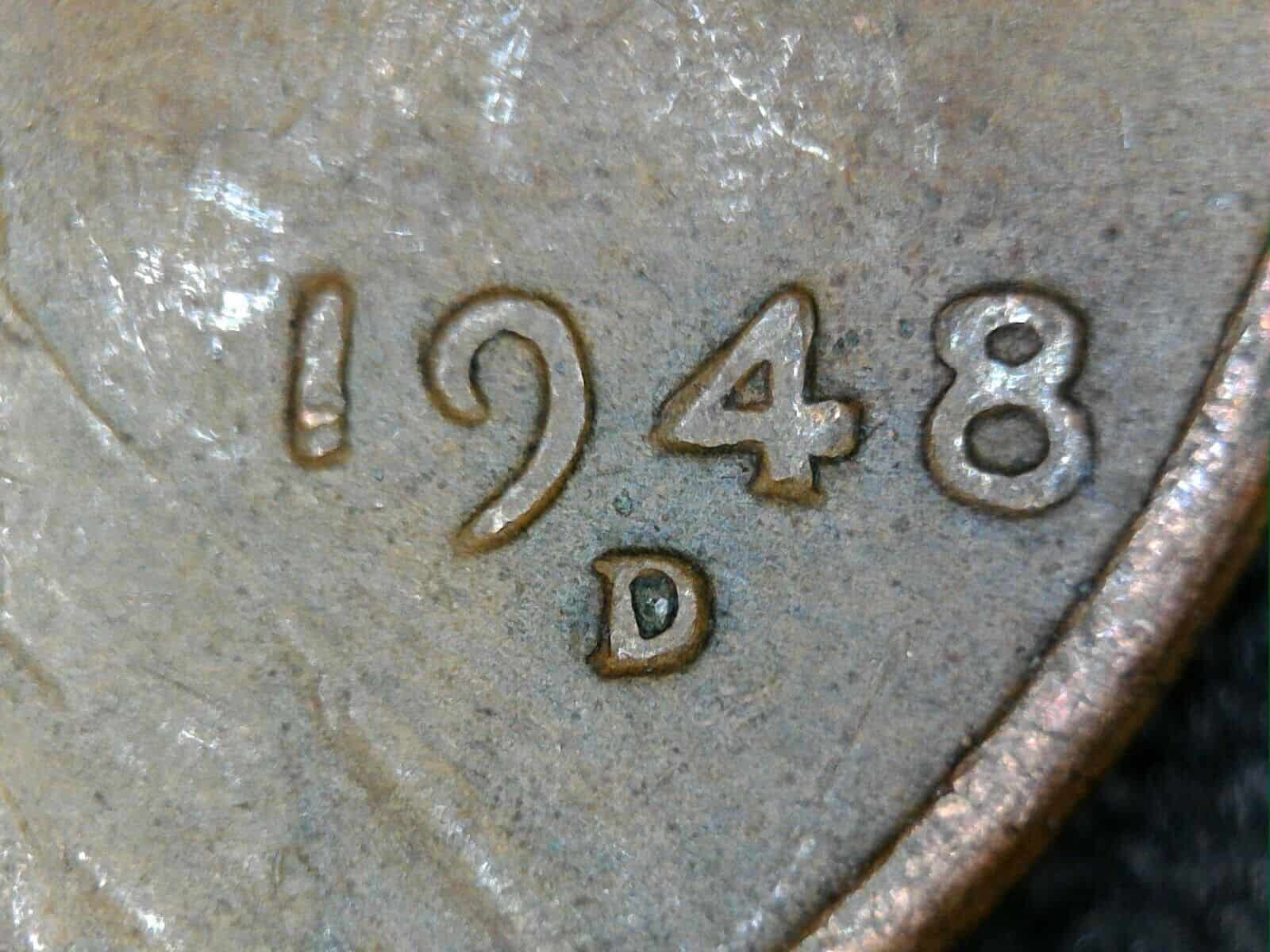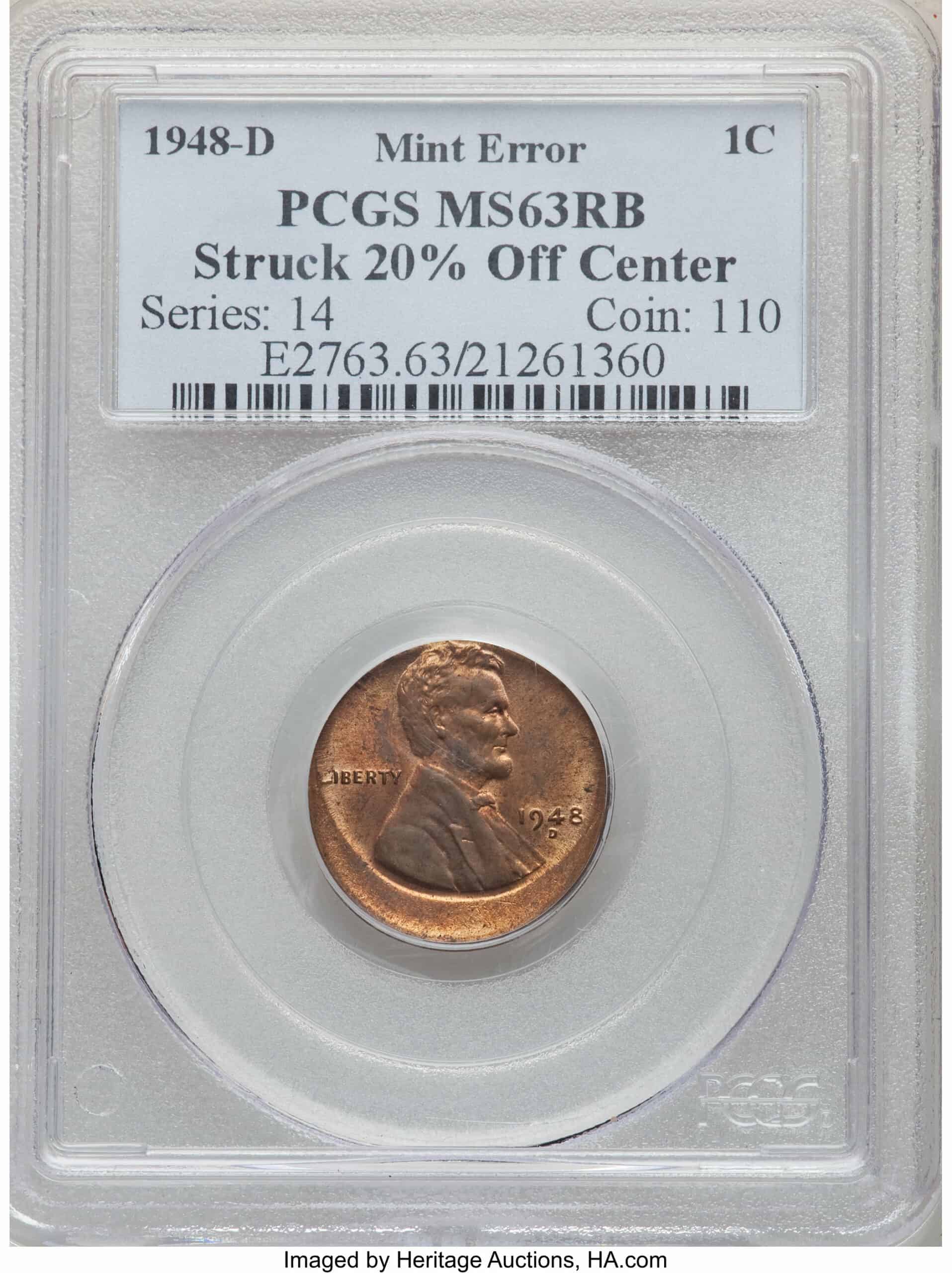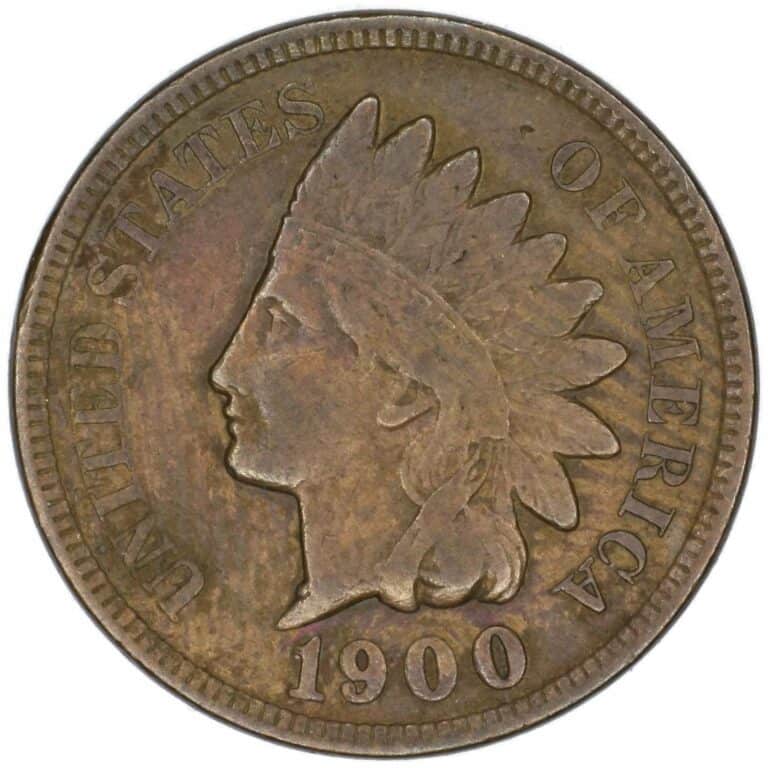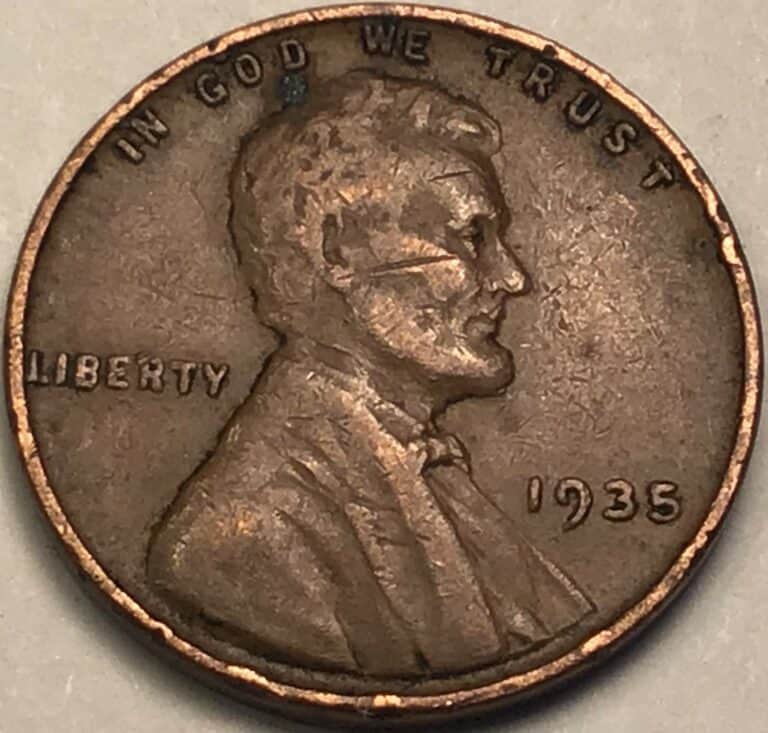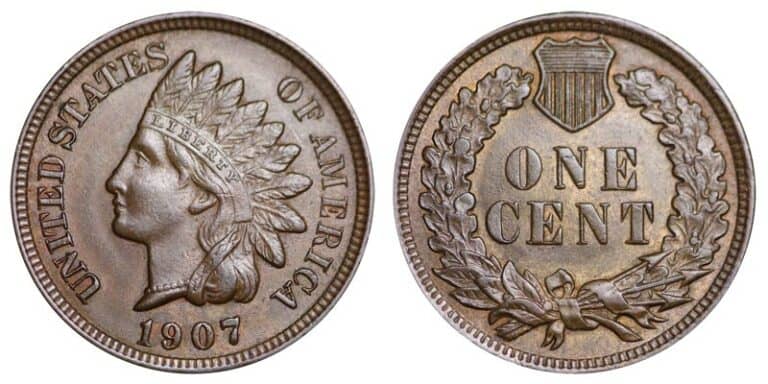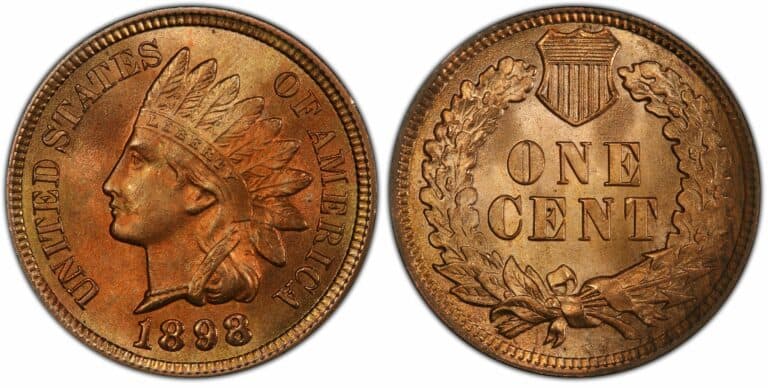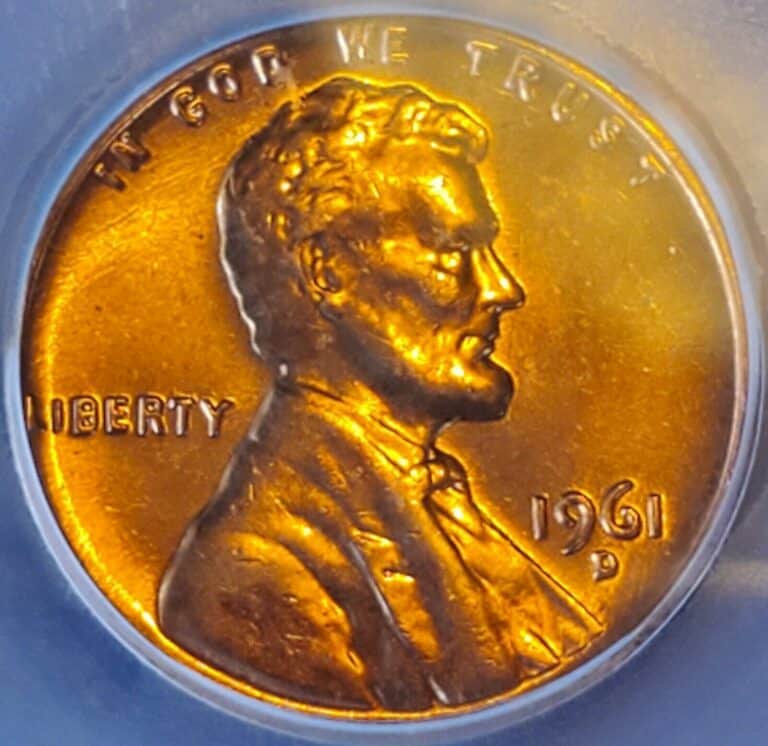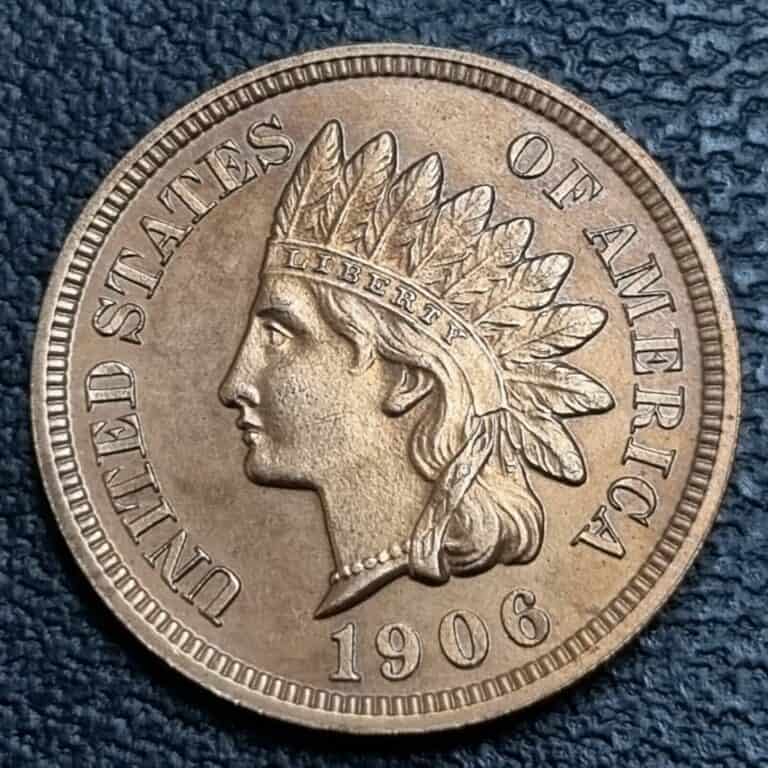1948 Wheat Penny Value: How Much is it Worth Today?

There are plenty of popular wheat penny dates, like the very first 1909 run or mintages in the 1920s. The 1948 wheat penny, however, captures little interest because there are rarer pennies out there.
But this coin is friendly for beginners and novice collectors. Plus, people would be surprised that these pennies still have good value, especially in high mint-state grades and coveted color designations.
The 1948 wheat penny value isn’t impressive to some people. Most of them just cost a few cents. But some of them have mint errors, fine conditions, and other rarities that skyrocket the price. Today, we’ll get into the ins and outs of the modern-day value of the 1948 wheat penny.
1948 Wheat Penny Value Chart |
|||||||
| Mint Mark | Color | Extremely Fine | AU58 About Uncirculated | MS64 Choice Uncirculated | MS66 Gem Uncirculated | MS67 Superb Gem Uncirculated | |
| 1948 No Mint Mark Wheat Penny Value | MS Brown | $0.10 | $0.25 | $2.50 | $12.50 | – | |
| MS Red Brown | – | $6.75 | $23 | ||||
| MS Red | $14 | $120 | $2,100 | ||||
| 1948 “D” Wheat Penny Value | MS Brown | $0.10 | $0.25 | $2.50 | $12.50 | $32.50 | |
| MS Red Brown | – | $7.50 | $19 | $45 | |||
| MS Red | $12 | $45 | $900 | ||||
| 1948 “S” Wheat Penny Value | MS Brown | $0.10 | $0.25 | $2.50 | $12.50 | $25 | |
| MS Red Brown | – | $4.50 | $16.50 | $37 | |||
| MS Red | $7.50 | $38 | $155 | ||||
1948 No Mint Mark Wheat Penny Value

George Washington, the nation’s first president, had always been vocal about not wanting to put people on money. For over a century, the U.S. Treasury was guided by this request. But when Theodore Roosevelt stepped into office in the early 1900s, things started to change.
Roosevelt was excited by the thought of revitalizing U.S. coinage and finally honoring people on money. In 1908, he met with Victor David Brenner, a designer who admired Abraham Lincoln. Roosevelt assigned Brenner with designing a new penny with Lincoln on it.
And so, in 1909, the 100th birth anniversary of Abraham Lincoln, the first Lincoln cent was born. The design was straightforward, showing Lincoln on the obverse facing right. On his left is the word “Liberty,” on his right, the year of mintage, and above him, the motto “In God We Trust.”
The reverse is just as easy to digest. It has the words “One Cent” and “United States of America” engraved in the center, cradled by two ears of wheat stalks on each side of the coin. At the very top is the Latin creed “E pluribus unum.”
The first wheat pennies originally had Brenner’s initials “VDB” on them. But the public hated it, saying that he didn’t need such prominent recognition or advertisement on American coinage. So, the initials were removed right away.
In 1948, over 317.5 million Lincoln pennies were struck in Philadelphia. Despite the incredibly high mintage, not that many coins of this issue survived in high mint-state grades. Those that did are prone to having stains on them due to improper cleaning during planchet prep at the Mint.
Circulated 1948 (P) wheat pennies aren’t astounding in their value. In extremely fine condition, they’re worth around $0.10. And in AU58—the highest possible circulated grade—it costs no more than a quarter-dollar.
But the value of uncirculated coins is way greater, especially when given a high color designation.
Copper coins are bright and red when they’re first struck. Over time, they’ll start to tarnish and turn brown. The redder the coin, the more valuable a coin is. Lincoln pennies are designated one of three colors to determine their true value:
- MS Brown: Have less than 5% of the red tones remaining
- MS Red Brown: Have anywhere between 5% and 95% of lustrous red color
- MS Red: Have successfully retained over 95% of the original red vividness
1948 (P) wheat pennies in MS Red are more valuable than MS Red Brown, which is more valuable than MS Brown.
For example, an MS64 Brown 1948 (P) wheat penny is worth $2.50 today. If it were a Red Brown color, it might sell for $6.75. And in full, Red tones, it can be valued at $14.
The prices for the 1948 (P) wheat pennies only read the $100 mark in grade MS66—specifically in MS Red, which is valued at $120. Brown and Red Brown coins of this grade cost approximately $12.50 and $23, respectively.
At MS67 Red, 1948 (P) wheat pennies are valued today at $2,100 but have been known to sell at around $10,000 when the toning, luster, and eye appeal are extra fine.
1948 D Wheat Penny Value
The Denver Mint, on the other hand, minted 172.6 million wheat pennies in 1948. Denver is usually known for well-struck coins, but this issue did not meet those standards.
Many of the 1948 D wheat pennies were made with worn dies, resulting in poorly struck coins with lots of staining. Even those in mint-state, uncirculated grades sometimes have spotting. Because of that, these coins are less valuable than their Philly-minted cousins.
In circulated conditions, the 1948 D wheat pennies are valued at pretty much the same amounts as the Philadelphia pennies of that year. In extremely fine condition, you can expect to sell your 1948 D wheat pennies for $0.10. This goes up to $0.20 in AU55 and $0.25 in AU58.
The prices of the 1948 D wheat pennies in uncirculated conditions are higher but aren’t that impressive. At MS61, an MS Brown 1948 D wheat penny is valued at just $0.75. At MS62, it increases to just a dollar. MS Red Brown and Red coins don’t exist in these low mint-state grades.
The value of the 1948 D wheat penny only sees an uptick at around MS66. In MS Brown, these coins might cost $12.50 today. In MS Red Brown, there’s a slight increase to $19. MS Red is the most valuable with a significant jump in price to $45.
As usual, it’s the MS67 coin that is most valuable in this issue of the wheat penny. Brown and Red Brown coins hold a value of $32.50 and $45, respectively. But a fully Red MS67 1948 D wheat penny takes the cake with a value of $900.
1948 S Wheat Penny Value
San Francisco minted the fewest wheat pennies in 1948. The total from this Mint was 81.7 million one-cent coins, which is honestly still quite a lot. Most of the coins were minted from January to June, but 135,000 of them were struck in December in time for the holiday rush.
Frisco-minted coins are admired for their beautiful strikes and fine eye appeal, but the 1948 S wheat pennies seem to be an outlier.
The Mint had kept dies in the machines until they became ridiculously eroded. This resulted in poor-quality strikes on coins with shallow design elements.
Their solution was to polish the dies repetitively to clean them. The overpolished dies created a huge pool of pennies with shiny luster, boosting the population of high mint-state grades all the way to MS67. Because these coins aren’t rare, they’re even less valuable than Philly-minted 1948 pennies.
In circulated conditions, the value of the 1948 S wheat penny is the same as the pennies from both Philly and Denver. They’re valued at approximately $0.10 in extremely fine condition going up to $0.25 at AU58.
Uncirculated 1948 S wheat pennies start to shine a little more, especially with an MS Red designation. At MS64, a Red coin is worth $7.50, which isn’t a far cry from the values at MS Brown and Red Brown, which sit at $2.50 and $4.50, respectively.
Even in a superb mint-state grade of MS67, the differences in the prices of the three colors aren’t that impressive.
At MS Brown, a 1948 S wheat penny of this grade can sell for $25. At MS Red Brown, the price increases a bit to $37. And in MS Red, the value sits at $155—just a little over a hundred dollars more valuable than Red Brown.
1948 Wheat Penny Grading
Coin collectors commonly seek the help of grading experts to assess the condition of their 1948 wheat pennies. But in case you want to assess your own coin, we’ve come up with a quick guide to help you out.
- Good (Circulated): Heavily worn with letters and numbers that are barely legible. Lincoln’s facial features and the wheat ears on the reverse have flattened over time.
- Extremely Fine (Circulated): The highest points of the coin, like Lincoln’s cheek and jaw, only have slight wear. The words, numbers, and grains on the wheat stalks have moderate wear but are still detailed.
- Mint State: The coin is lustrous and shiny, with little to no contact marks, as if it’s barely been touched. Should have beautiful eye appeal and only a few minor hairlines. Design elements and words on the coin should be bold and distinct.
Even with the simple guide above, it’s still challenging to grade 1948 wheat pennies, especially if you’re a novice collector. Check out this grading guide to assess your 1948 wheat penny as accurately as possible:
Rare 1948 Wheat Penny Error List
There are plenty of errors you can find in the 1948 wheat pennies, owing to their huge mintage.
Here’s the lowdown on just a few of them:
1948 Wheat Penny Doubled Die Obverse Error
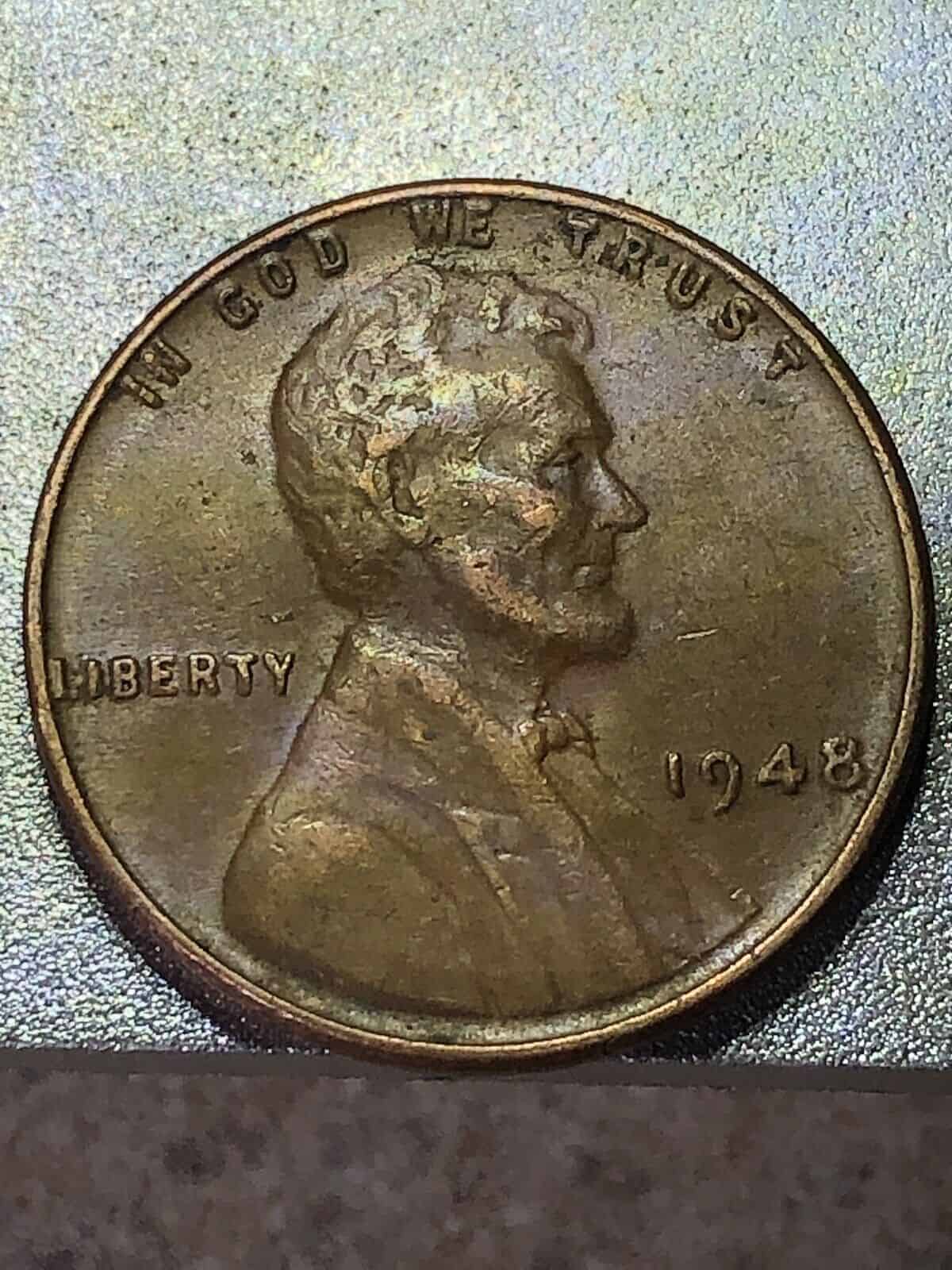
A doubled die obverse is so common in the Lincoln pennies that collectors don’t even blink when they see one.
When a coin is struck by a doubled die, it means the die was manufactured incorrectly, creating a doubling in some of the design elements of the coin. As a result, there’s a faint second image on the coin.
Many people confuse this error with a double strike, but they’re not the same thing. A double strike means that the coin was stamped twice. A doubled die error means the coin was stamped once with a faulty die.
1948 Wheat Penny Repunched Mint Mark Error
You can’t talk about wheat pennies without mentioning a repunched mint mark. The “RPM” is probably the most common error you can find in a Lincoln penny, including the 1948 run.
A coin has an RPM when there is a second impression of the mint mark on the coin, seemingly stamped on top of a first punch and causing an overlap. In the “S” mint mark specifically, it can be difficult to find. You’ll need a magnifying glass or microscope to see it.
1948 Wheat Penny Broadstruck Out of Collar Error
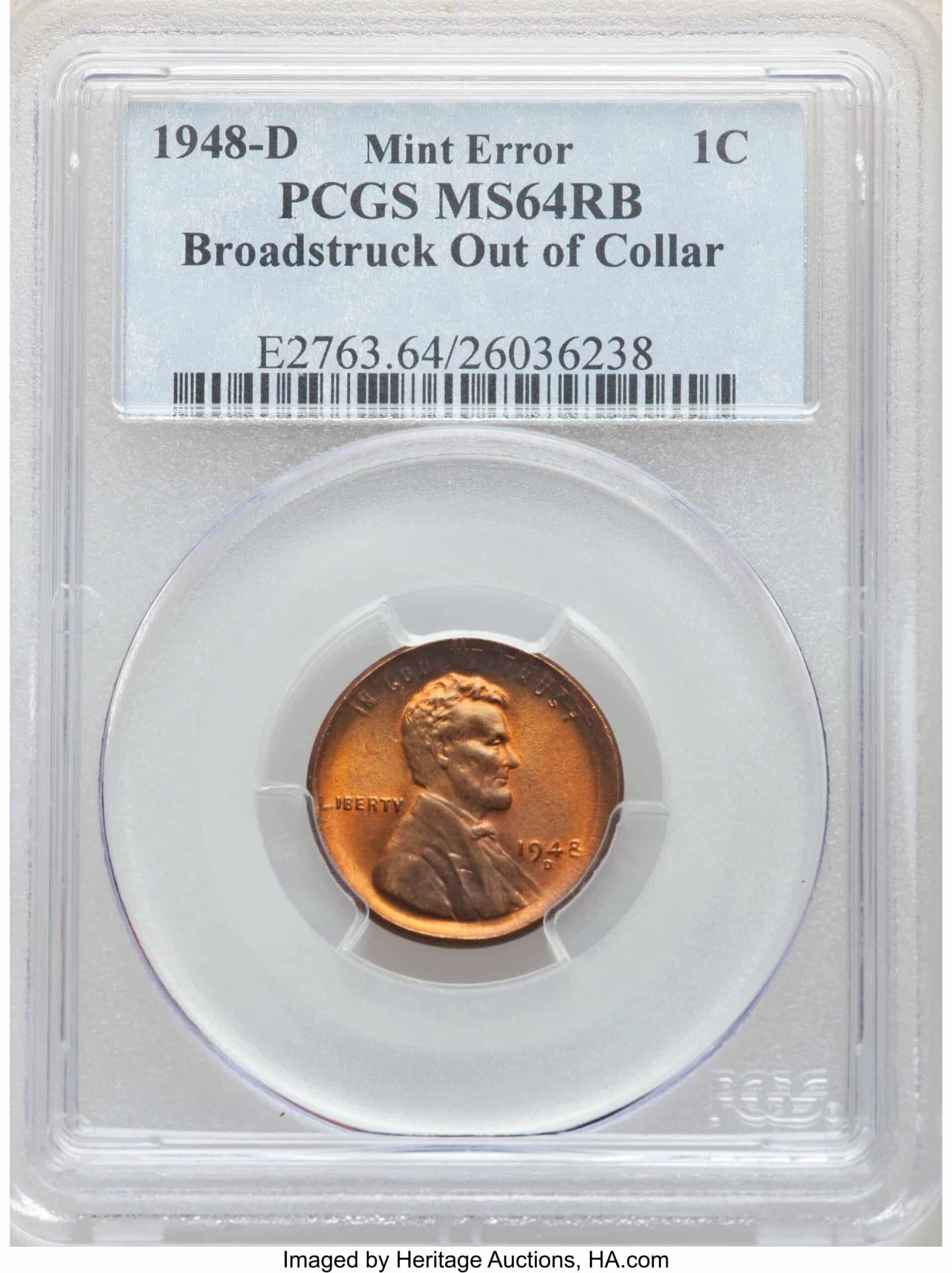
This error occurs when the planchet is not properly set in the collar before the die strikes it. Because of that, the shape of the coin is altered, making it look flattened around the edges.
A 1948 MS64 Red Brown wheat penny with this error can sell for a little over $85. You’ll likely notice the error because of a weirdly shaped rim and an illegible engraving of the motto “In God We Trust” on the obverse.
1948 Wheat Penny Struck 20% Off-Center Error
When a coin is struck off-center, it means that the punch of the die did not hit the exact middle of the coin. It leaves a part of the planchet blank, which is then defined by a percentage of blankness. The higher the percentage of the off-center strike, the rarer and more valuable the coin.
This error was found in a 1948 D wheat penny in grade MS63 Red Brown. It had a 20% off-center strike, leaving one-fifth of the coin blank on one edge. It sold for over $100.
1948 Wheat Penny FAQs
Are all 1948 pennies valuable?
Not all 1948 pennies have a high value today. Most of them, especially those that were in circulation. Many of these coins are worth just a few cents to below $1.
Valuable 1948 wheat pennies are those in mint-state condition and MS Red color. These can go up to hundreds and even thousands of dollars.
What’s a 1948 wheat penny with no mint mark worth?
1948 wheat pennies with no mint mark are those struck in Philadelphia. These are the most valuable coins of the issue. In circulated conditions, they’re worth anywhere between $0.05 to $0.25. In uncirculated condition, they’re valued from $0.60 to up to $2,100.
What is the rarest wheat penny date?
The rarest wheat penny date is the 1909 penny. It was the first run of the wheat penny series and is therefore a key date that collectors look for.


